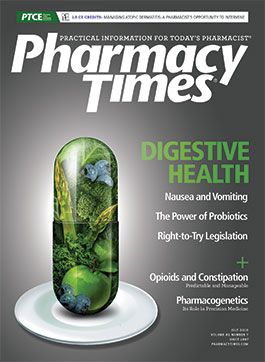Publication
Article
Pharmacy Times
FDA Generic Drug Rejection, Approval Rates Tell a Conflicting Story
Author(s):
Although the FDA has received much praise for increasing the number of generic drugs approved, the agency also recently recorded its highest number of rejections in 1 month.
Although the FDA has received much praise for increasing the number of generic drugs approved, the agency also recently recorded its highest number of rejections in 1 month. The FDA rejected 73% of Abbreviated New Drug Applications (ANDAs) in the month ending April 16. Those 190 rejections represented a 30% increase from the second-highest month, ending March 16, in which 147 applications were rejected.
Despite the dip, so far this fiscal year, the FDA has approved 397 applications, which puts the agency on pace to almost double the 492 ANDAs approved in 2015. The FDA credits its banner approval year in 2015 to the almost 1000 new employees the agency was able to hire with money appropriated by the Generic Drug User Fee Act (GDUFA) of 2012.
The FDA’s Office of Generic Drugs released a report touting the agency’s 2015 achievements just 2 months after the US Senate held a hearing to investigate the culprits behind the growing backlog of generic drug applications. The issue at hand was the status of the GDUFA, which affords the FDA additional Congressional funding for a period of 5 years to facilitate faster generic drug approvals. The GDUFA requires generic industry stakeholders to pay user fees to supplement the costs associated with reviewing generic drug applications and inspecting facilities faster. These fees are intended to ultimately help applicants market their drugs earlier.
The FDA declined to comment on the rise in application rejections, but an agency spokesman told Regulatory Focus, “The raw numbers of Agency actions on ANDAs vary for a variety of reasons, and we would not be able to speculate on specific causes of any change over a relatively short time period.”
There are several regulatory reasons why an ANDA may not receive approval. For instance, the agency may refuse to accept an application missing information. “A refuse-to-receive decision indicates that FDA determined that an ANDA is not sufficiently complete to permit a substantive review,” the FDA explains.
The FDA guidance also says ANDA applications can be rejected in the early stages for 1 of 3 reasons:
- Failing to provide adequate justification for proposed limits in drug substances and drug products for specified identified impurities that are above qualification thresholds
- Failing to provide adequate justification for proposed limits for specified unidentified impurities that are above identification thresholds
- Proposing limits for unspecified impurities (eg, any unknown impurity) that are above identification thresholds
Additionally, the FDA can also refuse to consider an ANDA if the applicant is not current on its GDUFA user-fee obligations. Whatever the reason, the news of a higher number of ANDA rejections is likely unwelcome among patients and providers. Debates over generic drug prices and availability are becoming increasingly more heated.
Senator Patty Murray (D-WA) recently said some individuals in government are concerned that the remaining backlog of generic drug applications at the FDA are “part of the reason patients and families are experiencing high drug costs.” Specifically, Sen. Murray said many believe that slower generic drug approval times generally mean less competition, allowing the company selling the innovator drug to price it without any downward pressure from market forces. However, Dr. Woodcock explained that when an application is for the first generic competitor to the innovator drug, the agency expedites it. “They get the fast track,” she asserted.







